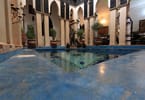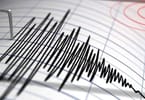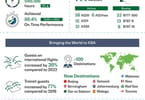NASA has a new spacecraft operating on the surface of Mars. This afternoon, the Phoenix Mars Lander, built by Lockheed Martin (NYSE:LMT
At 4:24 p.m. Pacific Daylight Time today, onboard software commands fired six separation nuts and jettisoned the cruise stage of the spacecraft while it was 635 miles away from the surface. That started a series of events that took the spacecraft through six different configurations and from a speed of 12,500 mph to a gentle touchdown on the surface. The data signal confirming the spacecraft had successfully landed was received on Earth at 4:53 p.m.
“Phoenix is an amazing machine and it was built and flown by an amazing team. Through the entire entry, descent and landing phase, it performed flawlessly,” said Ed Sedivy, Phoenix program manager at Lockheed Martin Space Systems Company. “The spacecraft stayed in contact with Earth during that critical period and we received a lot of data about its health and performance. I’m happy to report it’s in great shape.”
Flight operations since launch and through landing were performed by a tight-knit team in Pasadena and Denver. Mission management and navigation were handled by JPL and spacecraft operations were performed by Lockheed Martin. The joint team stayed in daily contact with the spacecraft through the Deep Space Network since its launch on Aug. 4, 2007.
“We are absolutely delighted by the successful landing of the Phoenix spacecraft,” said Jim Crocker, vice president of Sensing & Exploration Systems at Lockheed Martin Space Systems Company. “Years of patience, planning, preparation and teamwork paid off handsomely this afternoon. We’re very proud to have played a role in another one of NASA’s exciting voyages of exploration.”
After landing, the spacecraft waited 20 minutes for dust to settle before it deployed its stereo camera, meteorology mast, robotic arm bio-barrier bag and, most importantly, its twin solar arrays. The camera took images of each 6′ 10″ solar array which confirmed both were fully deployed allowing the spacecraft to generate its own power. It also took other pictures of a lander foot pad and instruments on the lander’s deck. Those images were returned to Earth via the Mars Odyssey orbiter at 6:47 p.m.
“We’ve passed the hardest part and we’re breathing again,” said JPL’s Barry Goldstein, Phoenix project manager. “Seeing the images that Phoenix sent back after a successful landing reaffirmed the thorough work over the past five years by a great team.”
The University of Arizona leads this first Mars Scout mission for NASA from its Lunar and Planetary Laboratory in Tucson. Most of the scientific study for the mission will be performed out of the university’s Science Operations Center. The NASA mission, valued at $420 million, includes the spacecraft development, science instruments, the Delta II launch vehicle, mission operations and science operations.
“I’m truly pleased that we are back at Mars. The journey feels much longer than 422 million miles. We have gone through challenges and trying times, and now we’re going through jubilation,” said Peter Smith, of the University of Arizona, principal investigator for the Phoenix mission. “I’m very grateful of NASA, JPL and Lockheed Martin for making this mission a reality and for allowing us to advance the scientific study of our neighboring planet.”
Two NASA orbiters, Mars Reconnaissance Orbiter and 2001 Mars Odyssey, played major roles in getting Phoenix safely to the ground. Odyssey provided the communications data link between Phoenix and Earth throughout the entire entry, descent and landing phase. MRO’s powerful HiRISE camera took unprecedented high-resolution images of multiple landing site options. The images gave analysts a preview of the potential landing sites, allowing them to determine which area was the least risky. MRO also received Phoenix data during its journey to the surface, but the orbiter recorded the data and sent it back to Earth at a later time. Both MRO and Odyssey spacecraft were built by Lockheed Martin and both are operated for JPL by the company.
Lockheed Martin has been an industry partner with NASA and the JPL for more than three decades on many interplanetary missions that have ushered in a new and exciting era in the scientific study of our universe and, particularly Mars. Beginning in 1971 with the Atlas/Centaur launch of Mariner 9 as well as the Viking missions in 1976, and continuing with aero shell and heat shield development for the Mars Science Laboratory, Lockheed Martin has been at the forefront in the development of spacecraft and systems used to explore Mars.
Lockheed Martin Space Systems Company, a major operating unit of Lockheed Martin Corporation, designs, develops, tests, manufactures and operates a full spectrum of advanced-technology systems for national security, civil and commercial customers. Chief products include human space flight systems; a full range of remote sensing, navigation, meteorological and communications satellites and instruments; space observatories and interplanetary spacecraft; laser radar; fleet ballistic missiles; and missile defense systems.
Headquartered in Bethesda, Md., Lockheed Martin employs about 140,000 people worldwide and is principally engaged in the research, design, development, manufacture, integration and sustainment of advanced technology systems, products and services. The Corporation reported 2007 sales of $41.9 billion.
WHAT TO TAKE AWAY FROM THIS ARTICLE:
- That started a series of events that took the spacecraft through six different configurations and from a speed of 12,500 mph to a gentle touchdown on the surface.
- MRO also received Phoenix data during its journey to the surface, but the orbiter recorded the data and sent it back to Earth at a later time.
- Lockheed Martin has been an industry partner with NASA and the JPL for more than three decades on many interplanetary missions that have ushered in a new and exciting era in….






















